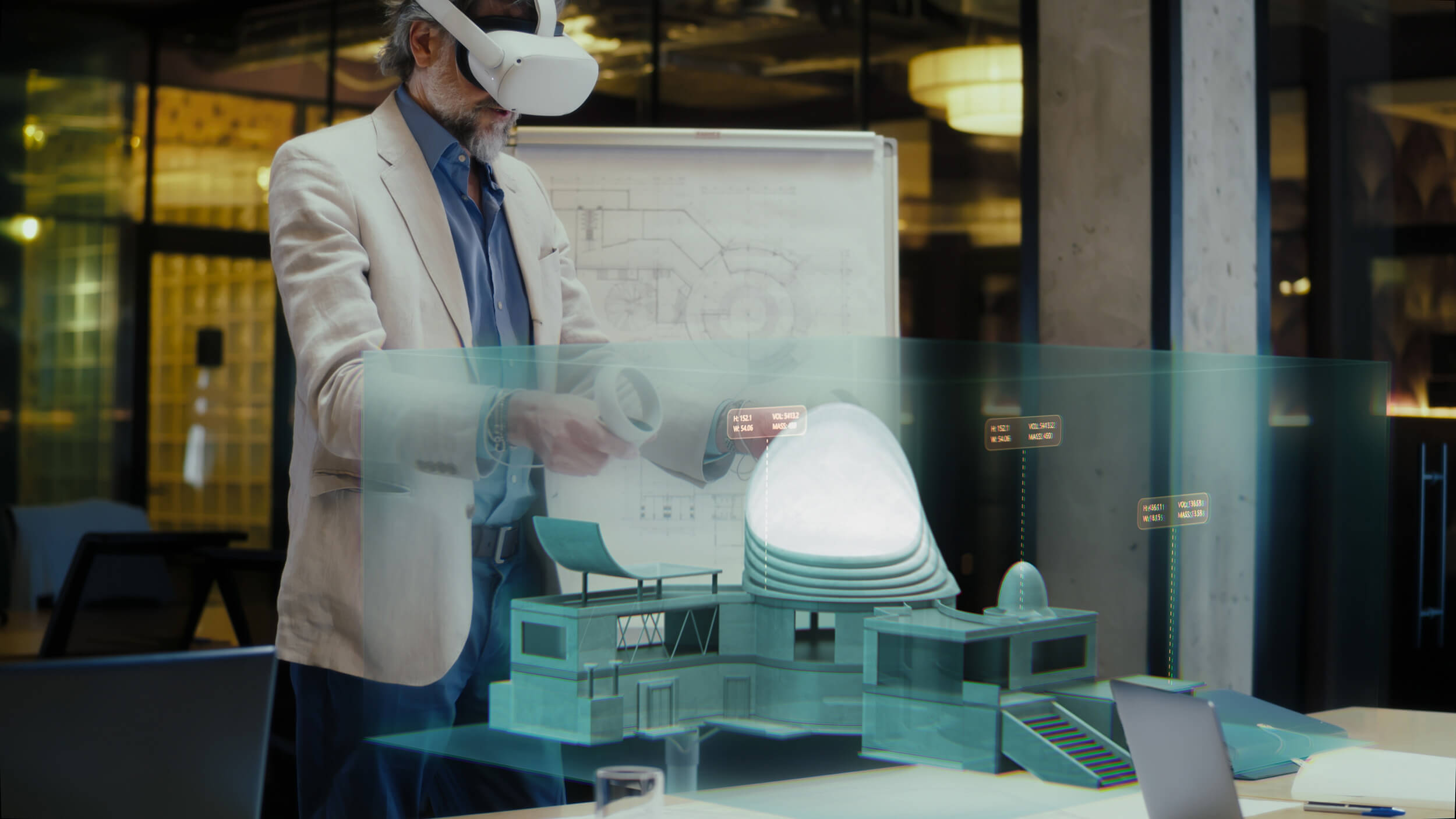Virtual Reality (VR) has evolved from a futuristic concept to a practical tool for creating unforgettable event experiences that drive real results. From interactive brand activations to immersive storytelling, VR at events is helping brands engage audiences in ways that traditional methods can’t match.
In this article, we’ll explore why VR is gaining traction at events, provide real-world examples of how it’s being used, and share key insights for maximizing its impact.
One of the most effective ways to gain traction for your event booth is with VR games.
Why does Virtual Reality elevate Events, Trade Shows and Conferences?
VR offers something traditional displays simply can’t — presence. Instead of passively watching a presentation or browsing a product showcase, VR places attendees inside an experience. When done right, VR experiences in events don’t just entertain — they educate, inspire, and leave a lasting impression. VR works particularly well in event environments because it:
- Immerses Attendees: VR allows users to step into simulated environments, making experiences more memorable.
- Simplifies Complex Ideas: VR can visualize large-scale processes, data, or designs that are hard to explain through static content.
- Boosts Engagement: Interactive VR keeps participants engaged longer and encourages them to explore your message or product more deeply.
- Creates Shareable Moments: Attendees often take videos or pictures of themselves using VR, driving organic social reach.
Let’s chat
Not sure where to start? Book a free strategy call with us to get started! No strings attached.

How can VR be used in Events?
The key to VR’s success at events lies in thoughtful design, combining intuitive controls, impactful storytelling, and memorable visuals. VR isn’t limited to one use case — its flexibility makes it valuable across a range of event types. Here’s how various sectors can use VR to captivate audiences:
Product Demonstrations
VR allows attendees to explore product features, functionality, and design in immersive detail. Tech brands leverage VR to break down product internals or demonstrate software solutions in action. At any summits or conferences VR data visualization allows attendees to explore stock market trends in an immersive, 3D format — helping simplify abstract concepts and idea retention.
To help Warp stand out at NRF 2025, we developed an Apple Vision Pro experience that visually explained AI-powered shipping routes—making complex logistics easy to understand and engaging for attendees.
Training for Safety and Industrial Skills
VR’s ability to visualize large-scale processes is perfect for brands showcasing industrial designs or complex machinery. Construction, utilities, and manufacturing companies use VR to provide hands-on demonstrations of machinery, site safety, or equipment operation. VR simplifies complex industrial processes, making training safer and easier to manage. At construction expos VR simulations can enable users to operate virtual cranes, visualizing how modular buildings are assembled step-by-step, or even visualize the construction process while making changes in VR in real-time.
VR Games and Interactive Experiences
Gamified experiences are an excellent natural invite to the booth. Virtual Reality Games at events instantly drive traffic and engagement. For example, RPR’s F1 x Lenovo VRX project placed attendees in the driver’s seat, letting them experience the thrill of navigating a high-speed F1 track. For high-energy crowds, fast-paced games like racing simulators or sports-themed VR competitions can generate excitement.
Immersive Brand Storytelling
Brands aiming to emotionally connect with their audience can use VR to craft impactful narratives. From retail pop-ups and product launches to fashion events, VR creates highly shareable experiences that resonate with younger audiences. For example, fashion brands like Dior and Chanel have introduced VR fashion shows, blending immersive design with digital product showcases. Ralph Lauren’s Virtual Store at Bloomingdale’s also allowed shoppers to walk through a cinematic VR shopping experience during Fashion week of 2022.
VR Training and Simulations
For industries requiring hands-on training or complex skill-building, VR simulations provide a safe, controlled environment to learn. At construction expos, VR lets users operate cranes or assemble modular structures step by step. In healthcare, VR surgery simulators give medical professionals a risk-free way to practice delicate procedures. It can also be used in hospitality, tourism, and hotel training—like Hilton did to upskill team members more quickly, including training focused on building empathy with guests.
Virtual Test Drives and Automotive Showcases
Car brands use VR to offer interactive test drives, showcase vehicle interiors, and demonstrate advanced features. Auto brands like Tesla and BMW have used VR to provide immersive test drive experiences. At an auto show, attendees can virtually “sit” in a new car model, explore vehicle interiors, compare model features, or visualize performance in different environments — all from a seated VR station designed to simulate driving conditions.
360° Destination Experiences and Virtual Tours
VR is redefining how travel companies promote destinations and resorts. Luxury hotel chains let potential guests walk through hotel rooms, explore beachfronts, or experience adventure activities before booking. Museums, galleries, and cultural institutions can use VR to recreate historical events or environments. For example, RPR worked on a Historic Time-Travel Visual Experience, where attendees were immersed in key moments from the past — enhancing learning with interactive exploration.
Medical and Healthcare Demonstrations
VR is becoming popular in medical conferences for showcasing surgical techniques, medical equipment, and anatomy visualizations. Educational institutions and corporate trainers are increasingly adopting VR to create interactive learning experiences. Medical conferences, for example, feature VR surgery simulators that allow participants to practice delicate procedures in a safe, virtual environment, or VR visualization to help with patient education and outcomes.
Key Considerations and Challenges Faced with VR in Events
- User Flow Management: Long sessions can create bottlenecks. Consider shorter, high-impact interactions for busy events.
- Hygiene & Maintenance: Clean headsets frequently between users to ensure attendee safety and comfort. Consider quick-dry disinfectant wipes or UV sanitizers.
- Device Setup & Charging: VR headsets need to stay charged throughout the day. Keeping backup units or portable power stations on hand can prevent interruptions.
- Accessibility: Ensure your VR experience is accessible to all attendees. Options like seated VR stations or experiences that use hand-tracking (instead of controllers) can improve inclusivity.
- Sound Management: Noisy event spaces can reduce immersion. Using noise-canceling headphones or enclosed VR setups helps improve audio clarity.
Keep up to date
Sign up to our newsletter for exclusive updates and content, delivered directly to your inbox.
The Future of VR in Events
As VR hardware and software improve, expect to see even more creative and impactful applications in event spaces. Emerging trends include:
- Spatial Computing Experiences: Devices like Apple Vision Pro are introducing powerful new ways to blend physical and virtual spaces.
- AI-Enhanced VR: Combining VR with AI opens new possibilities for dynamic storytelling, personalized content, and adaptive experiences.
- Haptic Feedback Integration: VR hardware that includes vibration or motion feedback enhances realism in interactive experiences.
- Cloud-Based VR: This will reduce hardware dependency, making VR experiences more scalable for high-traffic events.
As these innovations become mainstream, VR is redefining what’s possible at live events — offering brands the ability to connect with audiences in powerful new ways. 85% of event planners believe that immersive experiences foster greater attendee engagement. Whether you’re showcasing a product, visualizing data, or crafting unforgettable entertainment, VR can help you captivate and inspire.
With thoughtful design and proper planning, VR doesn’t just elevate events — it leaves a lasting impression.

FAQs about Virtual Reality Event Examples
What types of VR experiences work best for events?
Fast-paced, interactive experiences like VR games, simulations, or guided storytelling tend to captivate attendees most effectively.
How much space is needed for a VR setup?
This depends on the experience. Seated VR setups require minimal space, while room-scale experiences need clear walkable areas for safety.
How do you manage queues for VR experiences?
Consider setting session limits (2-5 minutes), using sign-up stations, or creating waiting area content (like screens showing live gameplay) to keep crowds engaged.
Which VR headsets are best for events?
Popular choices include the Meta Quest 2, Pico 4, and Apple Vision Pro for their portability, easy setup, and strong performance.
References
- https://rockpaperreality.com/insights/virtual-reality/virtual-reality-for-events-how-to-stand-out-and-captivate-your-audience/
- https://rockpaperreality.com/insights/virtual-reality/virtual-reality-games-for-events/
- https://rockpaperreality.com/our-work/lenovo-formula-1-vrx-experience/
- https://emperiavr.com/project/ralph-lauren/
- https://rockpaperreality.com/our-work/first-of-its-kind-ar-content-launch-in-google-maps-in-collaboration-with-google-arts-and-culture/
- https://pmc.ncbi.nlm.nih.gov/articles/PMC11616384/
- https://www.encoreglobal.com/news-releases/2024-outlook-research-insights-driving-the-events-industry/
